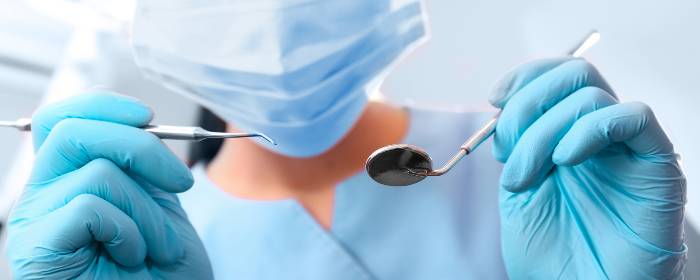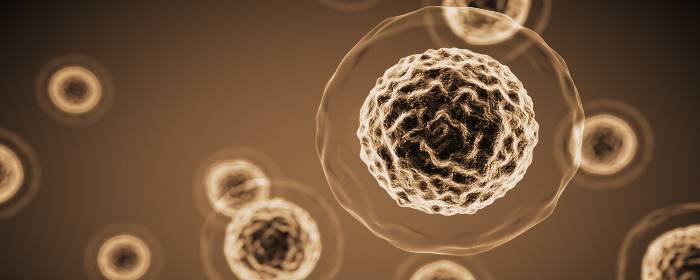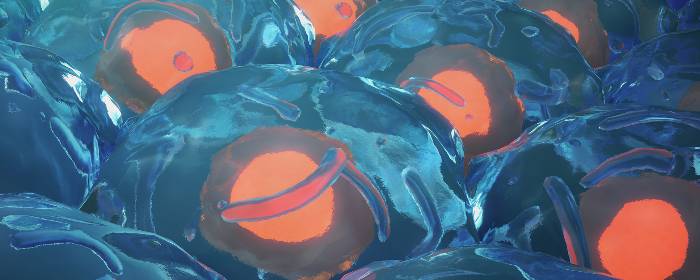
by admin | Oct 11, 2019 | Mesenchymal Stem Cells, Exosomes, Osteoarthritis
The field of Regenerative Medicine has shown great promise for helping those with a variety of chronic diseases, including arthritis. Indeed, data on the potential value of using stem cells to address issues relating to arthritis have been growing. While specific stem cells like mesenchymal stem cells have demonstrated therapeutic effects in models of arthritis and other inflammatory diseases, the specific ways in which these cells confer their benefits are not yet well understood. Given that these stem cells contain different types of elements, it is important that research establishes which of these elements is critical to the therapeutic properties of stem cells.
A recent study, published in Theranostics, looked specifically at the different effects that small exosomes and larger microparticles from within mesenchymal stem cells have on the inflammatory processes that occur in arthritis. To conduct their experiment, scientists isolated the exosomes and microparticles from mesenchymal stem cells using an ultracentrifugation technique and then exposed the exosomes and the microparticles to cells of the immune system – specifically, T and B lymphocytes, which are implicated in arthritis.
What the researchers found was that, in their models of arthritis, both the exosomes and the microparticles suppressed the T lymphocyte proliferation that is indicative of inflammation. However, unlike microparticles and even parental mesenchymal stem cells, the exosomes were also able to induce other anti-inflammatory effects. The result of exosome activity was, therefore, more efficient blunting of inflammation.
These results point to the potential of not just stem cells, but specifically the exosomes of these cells, in therapeutically addressing inflammatory arthritis. While more research is needed to understand how these exosomes could actually impact arthritis patients, these data provide hope that stem cells and even just elements of stem cells will help these patients by improving their ability to combat problematic inflammation.
Reference: Cosenza, S. et al. (2018). Mesenchymal stem cells-derived exosomes are more immunosuppressive than microparticles in inflammatory arthritis. Theranostics, 8(5), 1399-1410.

by admin | Aug 29, 2019 | Age Management, Mesenchymal Stem Cells, Stem Cell Therapy
Cognitive aging describes the changes to our ability to think, remember, and process information that occurs as we age. Cognitive aging begins in adulthood and progresses—if not accelerates—in old age. Over time, the speed at which we process information in the brain slows down, our ability to pay and maintain attention decreases, and we have a harder time making and recalling new memories. While some view cognitive aging as normal because it occurs in all of us, others acknowledge that cognitive aging is something that interferes with a person’s ability to function and diminishes the quality of life.
Currently, there are very few things that can slow cognitive aging and essentially nothing that can reverse it. Physical exercise, mental activity, and a healthful diet can modestly preserve cognitive function as we age. However, once aging occurs in the brain, there is nothing that we can do—currently—to change it.
Some innovative scientists are trying to change that, however. They are focusing on the changes in the brain that take place during aging and using stem cells to reverse that process.
A group of neuroscientists focused their efforts on memory and on the hippocampus, which is the main region of the brain that is responsible for memory. Researchers collected clinical-grade, mesenchymal stem cells taken from human umbilical cords and infused them into aging mice. Aging mice received stem cell treatment once every two weeks for several months.
After three months of treatment with umbilical cord-derived mesenchymal stem cells, mice showed significant improvement in learning and memory tests. Treated mice also had a remarkably improved function in the hippocampus. Surprisingly, stem cell treatment also created new brain cells (i.e. neurogenesis). Indeed, stem cell transplantation in aging mice actually reversed changes in the brain associated with cognitive aging.
These results were conducted in mice and not in humans, however, this research offers a strong foundation for conducting clinical human studies. If these improvements in memory and brain health could be shown in humans, it would be a groundbreaking study. Even in its current form, this research is an exciting breakthrough for the fields of stem cell medicine, neuroscience, and the neurobiology of cognitive aging. It suggests that mesenchymal stem cells may one day be able to reverse cognitive aging.
Reference: Cao N. et al. (2017). Clinical-grade human umbilical cord-derived mesenchymal stem cells reverse cognitive aging via improving synaptic plasticity and endogenous neurogenesis. 2017 Aug 10;8(8):e2996.

by admin | Jul 29, 2019 | Exosomes, Mesenchymal Stem Cells
Periodontal disease, better known as gum disease, is very common. About half of all adults have chronic gum disease, and as many as 15% had severe periodontal disease. In periodontal disease, the gums become red and inflamed. The tissues that connect the tooth to the bone, such as the periodontal ligament, are damaged or destroyed. Chronic periodontal disease can even invade and destroy jaw bone. Making matters worse, as the gums recede, they can collect bacteria in spaces called periodontal pockets. Over time, these periodontal pockets can become dental abscesses. As the gums become more and more diseased, the affected tooth or teeth may fall out.
The treatment for periodontal disease varies depending on its severity. Good oral hygiene including regular brushing and flossing can reverse mild periodontitis. A dentist can deeply clean, probe and disrupt periodontal pockets. In more severe cases, topical antiseptics or oral antibiotics may be required. Less often, a dental surgeon must remove diseased areas of gum and bone.
Periodontitis usually chronic and causes significant ongoing inflammation. Thus, the gums take a long time to heal. In many cases, periodontal disease can be difficult to treat.
Fortunately, dental researchers have been exploring ways to use mesenchymal stem cells to help the healing process. More specifically, they have been using the exosomes released by mesenchymal stem cells. Exosomes are small packets of proteins, RNA, and other molecules that help promote growth and tissue regeneration. Since exosomes are not cells, they are much easier to collect, store, transport, and administer to patients. Most importantly, exosomes appear to contain all of the things that make stem cells so powerful in regenerative medicine.
In a 2019 study, Dr. Chew and colleagues used exosomes collected from mesenchymal stem cells to treat rats with periodontal disease. The researchers noticed that animals treated with exosomes healed much faster than untreated animals. Exosomes taken from mesenchymal stem cells promoted periodontal tissue regeneration helped grow new bone and regrew periodontal ligaments. The researchers also found that exosomes were able to recruit new cells to replace the damaged ones.
This scientific research is an exciting breakthrough in the fields of dentistry and periodontics. Chew and co-authors have shown that mesenchymal stem cell exosomes could enhance periodontal tissue regeneration without any adverse effects. The scientists go on to state that these findings will serve as the basis for future “cell-free” exosome treatments for periodontal disease. This is certainly good news for the more than 150 million Americans with periodontitis.
Reference: Chew, JRJ. et al. (2019). Mesenchymal stem cell exosomes enhance periodontal ligament cell functions and promote periodontal regeneration. Acta Biomaterialia. 2019 Apr 15;89:252-264.

by admin | Jul 25, 2019 | Age Management, Mesenchymal Stem Cells, Stem Cell Research
Aging skin goes through a number of predictable changes. Skin loses collagen and other proteins as it ages, making the skin appear dull, saggy, discolored, and wrinkly. Many of these changes are due to the sun, as it bombards the skin with harmful ultraviolet (UV) radiation. When the skin is exposed to the sun’s UV radiation, it produces reactive oxygen species and leads to oxidative stress. The result is of these oxygen radicals is thickened, damaged, photo-aged skin. Unfortunately, the cells that could help replenish and rejuvenate the skin—epidermal progenitor cells—may also be damaged by UV radiation. Indeed, as we age, we produce fewer and fewer of these helpful cells. Thus, the skin is left defenseless.
Researchers are looking for ways to fight back against the ravaging effects of age and sun damage on human skin. Some have reasoned that if the skin lacks epidermal progenitor cells during aging, why not try to protect or restore those cells? Consequently, some scientists have studied the effects of injecting stem cells directly into the skin (with promising results). However, many patients would like to have the same skin rejuvenation effect without painful injections. Scientists are learning that the beneficial effects of stem cells come mostly from the things that they secrete rather than the stem cells themselves. This means that doctors could potentially take the fluid that a stem cell secretes and use that liquid as a treatment, rather than injecting whole stem cells into a patient’s skin. Indeed, this is the approach that researchers recently pursued and published.
Researchers began their research by collecting epidermal progenitor cells taken from mesenchymal stem cells. These epidermal progenitor cells are the stem cells that give rise to skin. Epidermal progenitor cells also produce substances that help support natural, youthful skin growth and development. The researchers allowed these epidermal progenitor cells to produce and release substances into the surrounding solution. They then collected that solution and used it in subsequent experiments.
In the first set of experiments, researchers showed that the cell-free fluid derived from stem cells could protect skin cells from oxidative stress caused by hydrogen peroxide. Indeed, something (or things) released by the stem cells prevented skin cells from undergoing the types of changes they would endure during sun damage. In fact, the treatment apparently caused the skin to increase its own natural defenses by producing more antioxidant enzymes and increasing the creation of new collagen.
Encouraged by these results, the researchers then conducted a clinical study of 25 people between the ages of 29 and 69. They took the same cell-free fluid derived from stem cells and applied it topically to the skin of volunteers twice a day for four weeks. The treatment significantly reduced skin depressions and wrinkles. Treatment also noticeably improved the texture of the skin.
Given the apparent safety and efficacy of this cell-free treatment, researchers are likely to continue to test these treatments in larger clinical trials. The results are exciting because they offer the possibility of a topical stem cell treatment without directly injecting stem cells themselves. Indeed, patients may someday be able to use cell-free stem cell skin rejuvenation treatments at home.
Reference: Sohn, SJ. et al. (2018). Anti-aging Properties of Conditioned Media of Epidermal Progenitor Cells Derived from Mesenchymal Stem Cells. Dermatology and Therapy. 2018 Jun;8(2):229-244.

by admin | Jul 22, 2019 | ALS, Mesenchymal Stem Cells, Multiple Sclerosis
Amyotrophic Lateral Sclerosis(ALS, Lou Gehrig’s disease) and Multiple Sclerosis (MS) are two separate diseases with some important similarities. Both ALS and MS interfere with a person’s ability to move. In both diseases, nerve cells are affected. In fact, in both diseases, cells of the immune system seem to attack and destroy the material that wraps around nerve fibers. Without this covering, nerve cells do not function properly, which is why muscle weakness and other problems occur in both ALS and MS.
Traditional treatments for MS and ALS are different. More than 15 drugs are approved to treat MS. In many patients, one or more of these treatments can help reduce flareups and perhaps slow the progression of the disease (ocrelizumab in progressive MS). ALS, on the other hand, is a very progressive condition. Two drugs (riluzole and edaravone) modestly slow down the rate at which ALS gets worse. Neither MS nor ALS, it should be mentioned, can be cured.
Because of the similarities between these distinct diseases, researchers conducted a clinical trial of both MS and ALS patients. The doctors infused mesenchymal stem cells into patients and followed their progress. The goals of the study were to determine if stem cell infusion was safe and if it was effective.
In MS patients, stem cell infusion helped reduce physical disability (mean score on the Expanded Disability Status Scale improved) for at least six months. In ALS patients, mesenchymal stem cell infusion appeared to stabilize the disease for at least six months (average score on the Amyotrophic Lateral Sclerosis Functional Rating Scale stayed the same). Given that ALS patients tend to decline rapidly, maintaining stability is actually a great success.
Interestingly, researchers conducted an MRI the day after stem cell infusion and found the stem cells were already moving to various places around the brain and spinal cord. This finding suggests that stem cell infusion works very rapidly, and that stem cells target diseased regions within the body.
It should be noted that many patients had temporary symptoms related to the injection such as fever and headache. The symptoms went away within days, however. Importantly, no major adverse events occurred during two years of follow-up.
Taken together, this research suggests that mesenchymal stem cell transplantation is a safe and effective treatment for patients with MS and ALS. Moreover, this infusion causes virtually immediate effects in the central nervous system. While more research is needed, these results may offer hope to patients with these challenging neurological diseases.
Reference: Karussis, D. et al. (2010). Safety and immunological effects of mesenchymal stem cell transplantation in patients with multiple sclerosis and amyotrophic lateral sclerosis. Archives of Neurology. 2010 Oct;67(10):1187-94.

by admin | Jul 19, 2019 | Bone Marrow, Mesenchymal Stem Cells, Multiple Sclerosis
Multiple Sclerosis is a disease of the nervous system that involves the demyelination of nerve cells. As nerve cells lose their myelination, it becomes harder for the cells to communicate with one another. Though there are a number of treatment options for multiple sclerosis, which usually involve immunosuppressants, the conventional treatments do not always work over the long-term and may be associated with unwanted side effects. Given the promising results of stem cells being used in treatments for other nervous system diseases, scientists have reasoned that stem cells could provide a valuable therapy for those with multiple sclerosis.
A recent study published in Cytotherapy has demonstrated for the first time the use of neural progenitors derived from bone marrow mesenchymal stem cells. According to the authors of the study, it has previously been recognized that these cells have the potential to help with multiple sclerosis therapy, whether they come from multiple sclerosis patients or those without multiple sclerosis. Preclinical research has also shown that the use of these stem cells can improve disease in multiple sclerosis models and lead to the recruitment of progenitors to sites of inflammation.
In the current study, scientists wanted to establish the safety and dosing of intrathecal neural progenitors derived from bone marrow mesenchymal stem cells in the treatment of multiple sclerosis and investigated the use of these cells in six patients with progressive multiple sclerosis who were not responding to conventional treatments. The patients were treated with between 2 and 5 injections of the stem cells, and they were evaluated for an average of 7.4 years following their first injection.
Not only were there no safety issues that arose with any of the treated patients, but 4 of the 6 patients demonstrated measurable clinical improvement through the use of stem cell treatment. The results of this pilot study provide support for both the tolerability and effectiveness of stem cell therapy for multiple sclerosis. Future research will help to clarify the specific protocols that may be used to achieve the desired results in this group of patients.
Reference: Harris, VK, Vyshkina, T, & Sadaiq, SA. (2016). Clinical safety of intrathecal administration of mesenchymal cell-derived neural progenitors in multiple sclerosis. Cytotherapy, 18(12), 1476-1482.







 St. Petersburg, Florida
St. Petersburg, Florida
